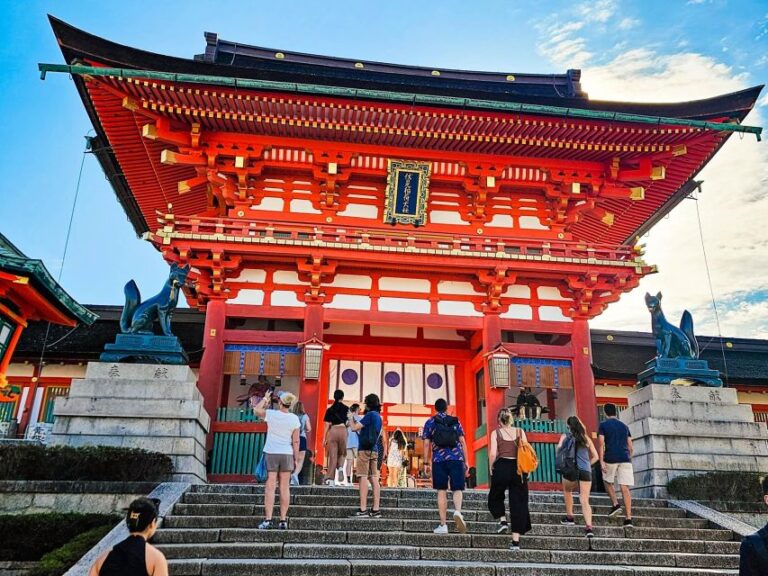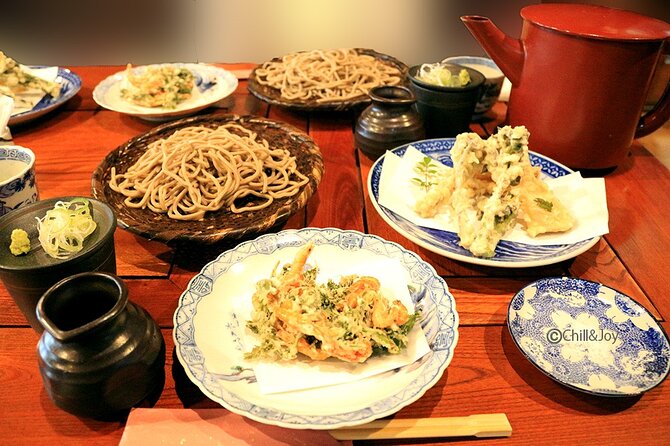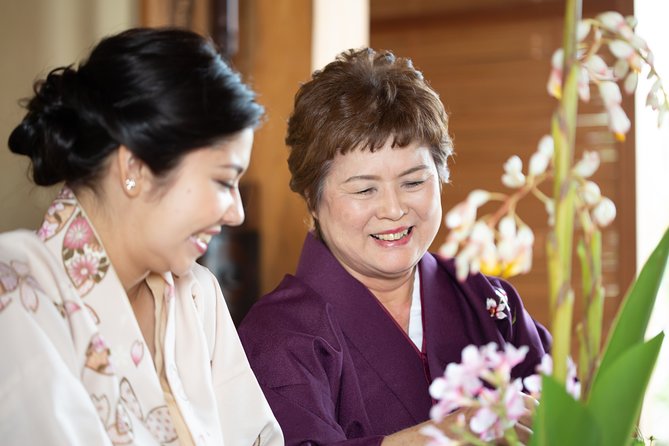Cook Homestyle Ramen and Gyoza From Scratch
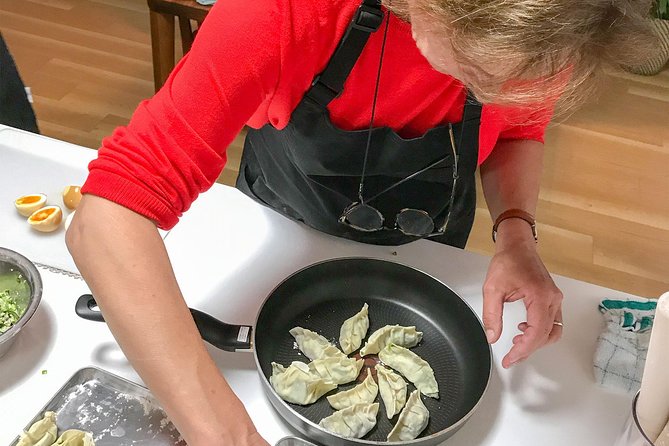
In the realm of culinary exploration, crafting homestyle ramen and gyoza from scratch is akin to embarking on a savory journey through the heart of Japanese cuisine.
The melding of flavors, textures, and techniques in creating these iconic dishes offers a glimpse into the intricate world of gastronomy.
As participants explore the art of preparing each element with precision and care, they uncover the essence of traditional Japanese cooking.
The satisfaction of creating these dishes from the ground up is unmatched, promising a culinary experience that lingers long after the final bite.
Key Points
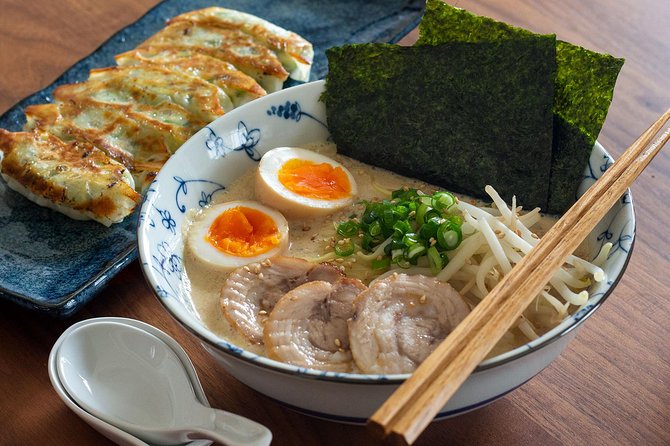
- Crafting fresh noodles and savory broth is essential for authentic ramen and gyoza.
- Balancing flavors and experimenting with seasonings elevate the taste of both dishes.
- Perfecting noodle making techniques and gyoza cooking methods are crucial for a homestyle meal.
- Enjoy a sensory experience and gain cultural insights through the flavors, textures, and traditions of Japanese cuisine.
It's also worth checking out some other tours and experiences nearby.
Ingredients for Ramen and Gyoza

When preparing homestyle ramen and gyoza in Osaka Prefecture, Japan, the essential ingredients include fresh noodles, savory broth, succulent pork, and flavorful seasonings.
For the ramen noodle making process, chefs meticulously craft the noodles to achieve the perfect texture. Pairing the ramen with Japanese tea enhances the dining experience, complementing the rich flavors of the dish.
On the other hand, gyoza cooking techniques involve pan-frying or steaming the dumplings to achieve a crispy bottom and a tender top. Flavor variations in gyoza can range from classic pork fillings to innovative vegetarian options, offering a diverse palette of tastes.
When served together, the ramen and gyoza create a harmonious balance of flavors that are sure to delight any palate.
Preparing the Ramen Broth
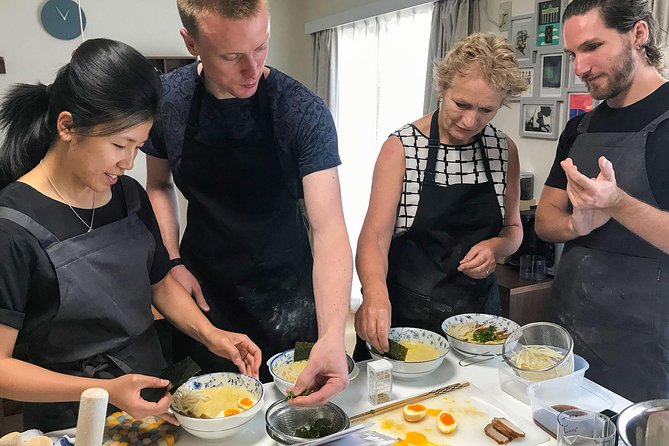
To craft the flavorful base of the homestyle ramen, the broth preparation stands as a cornerstone of the culinary process in Osaka Prefecture, Japan. The art of creating the perfect ramen broth involves a delicate balance of ingredients and techniques, resulting in a rich and aromatic soup that forms the heart of the dish.
- Slow Simmering: Achieving the depth of flavor required for an authentic ramen broth involves hours of slow simmering, allowing the ingredients to release their essence and meld together harmoniously.
- Umami Enhancement: To reach broth perfection, umami-rich elements like kombu seaweed, bonito flakes, and shiitake mushrooms are often incorporated, adding complexity and depth to the soup.
- Skimming and Straining: Regular skimming of impurities and meticulous straining ensure a clean and clear broth that showcases the pure essence of the ingredients.
Making the Gyoza Filling
Crafting the flavorful gyoza filling involves combining a savory mixture of ground pork, minced cabbage, garlic, ginger, and seasonings. The magic of gyoza lies in the balance of flavors such as the umami from the pork, the freshness of the cabbage, and the aromatic punch from the garlic and ginger.
Experimenting with different seasonings like soy sauce, sesame oil, and a hint of sugar can elevate the taste profile.
When it comes to folding the dumplings, mastering techniques like the classic pleats or the simpler half-moon shape is key. These techniques not only help seal the filling securely but also result in visually appealing gyoza that are ready to be pan-fried to golden perfection.
Crafting Ramen Noodles From Scratch
The process of making authentic ramen noodles from scratch involves a delicate balance of flour, water, and kneading to achieve the perfect texture and consistency. Noodle making techniques in Japanese cuisine are essential to master for this culinary endeavor. Here are some key points to consider:
- Time and Patience: Crafting ramen noodles requires time and patience to achieve the desired elasticity.
- Quality Ingredients: Using high-quality flour and water is crucial for the noodles to hold up well in flavorful broths.
- Consistent Kneading: Proper kneading techniques are vital to develop the gluten in the dough, resulting in the ideal chewiness.
Mastering these techniques will elevate your ramen dish, showcasing your culinary skills.
Assembling and Cooking Gyoza
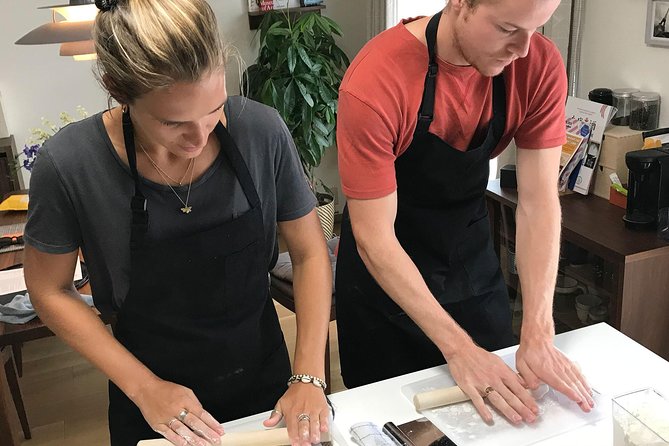
For assembling and cooking gyoza, beginners should start by preparing the filling mixture with a blend of minced pork, finely chopped cabbage, garlic, ginger, and seasonings.
Once the filling is ready, it’s time to master the art of gyoza folding techniques. Place a small amount of filling in the center of a gyoza wrapper, moisten the edges with water, fold the wrapper in half, and pleat the edges to create a crescent shape.
When it comes to cooking gyoza, beginners can opt for pan-frying, steaming, or a combination of both methods for a crispy yet tender texture. Serve the gyoza with a variety of dipping sauces like soy sauce, vinegar, and chili oil for added flavor.
For presentation, garnish with sesame seeds or chopped scallions to elevate the dish visually.
Serving and Enjoying the Homestyle Meal
When serving and enjoying the homestyle meal, guests can savor the rich flavors of the creamy broth ramen and the savory gyoza, complemented by a selection of traditional Japanese tea or refreshing water.
- Tasting Session: Engage in a sensory experience that combines flavors, textures, and aromas to appreciate the depth of Japanese cuisine.
- Cultural Insights: Gain a deeper understanding of Japanese culinary traditions and the significance of each element in the meal.
- Flavor Pairings: Explore the art of combining ingredients to create harmonious taste profiles that enhance the overall dining experience with every bite.
Enjoy a culinary journey that not only delights the palate but also provides insights into the cultural heritage and traditional techniques of Japanese homestyle cooking.
Frequently Asked Questions
Are There Any Vegetarian or Vegan Options Available for This Cooking Class?
When considering dietary preferences, this cooking class offers vegetarian options and vegan alternatives. Participants can enjoy plant-based dishes while learning to prepare homestyle ramen and gyoza from scratch in Osaka, Japan.
Can Participants With Food Allergies or Dietary Restrictions Be Accommodated During the Cooking Class?
Participants with food allergies or dietary restrictions can be accommodated during the cooking class. The instructor can provide allergen-friendly substitutions and make accommodations based on specific dietary needs to ensure an enjoyable and safe experience for all.
Is There a Minimum Age Requirement for Participants to Join the Cooking Class?
There is no minimum age requirement for participants to join the cooking class. Basic cooking skills are helpful, but beginners are welcome. The experience focuses on learning and enjoying the process of making homestyle ramen and gyoza.
Will There Be an Opportunity to Learn About the Cultural Significance of Ramen and Gyoza During the Class?
During the class, you will have the opportunity to learn about the cultural significance and culinary history of ramen and gyoza. This adds depth to the cooking experience, providing insight into these beloved Japanese dishes.
Are There Any Additional Activities or Experiences Included in the Cooking Class, Aside From Preparing and Cooking the Ramen and Gyoza?
When exploring additional activities in the cooking class, participants can expect hands-on techniques for creating flavorful broths and using authentic ingredients in traditional recipes. The experience goes beyond cooking, offering insights into cultural culinary practices.
Recap
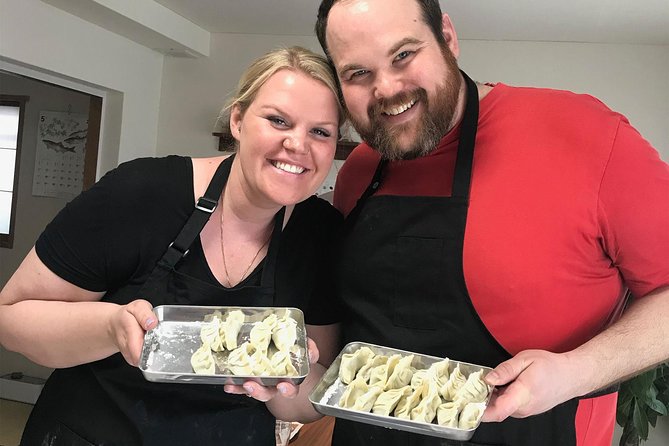
To sum it up, the ‘Cook Homestyle Ramen and Gyoza from Scratch’ experience in Osaka offers a hands-on culinary adventure that will leave participants with a newfound appreciation for Japanese cuisine.
From mastering traditional techniques to savoring the delicious end result, this activity provides a unique opportunity to take in the art of creating two beloved dishes.
Don’t miss out on this unforgettable gastronomic journey in the heart of Japan’s vibrant culinary landscape.

